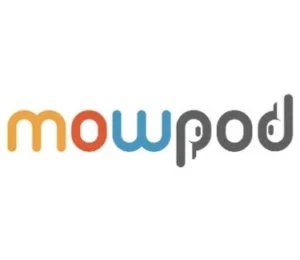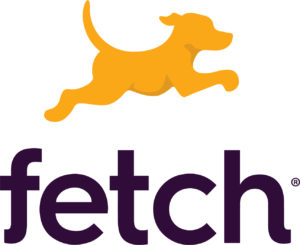Converting brand into creative — Alex Chrisman // Alta
Alex Chrisman
Alta

- Part 1Defining your brand
- Part 2Setting your brand strategy — Alex Chrisman // Alta
- Part 3 Converting brand into creative — Alex Chrisman // Alta
- Part 4Converting Brand into Brand Marketing — Alex Chrisman // Alta
- Part 5Pop Quiz: Branding Patagonia — Alex Chrisman // Alta
Show Notes
Quotes
-
“The really great brands are about saying ‘No.’ It’s understanding where the limits of the brands are and that’s also where you can get really creative. I had an amazing professor in college where he said, ‘Soccer without lines on the field are just a mob with a ball.’ The art and interesting stuff come in when you have limitations to play with.” -Alex“You think about how do you start translating that brand ethos, mission, and values into a trade of assets. You can look back to that thing that you were trying to accomplish just keep asking yourself about every single one of those, are you satisfying those things that you set up for yourself in each one of your decisions. It becomes your Litmus test for every single choice.” -Alex “It’s easy to say yes to everything you want to do. The hard part about building the brand is saying no to the things that you want to do that don’t make sense for the brand.” -Alex“It frequently happens when you are working with a new marketing manager or a new designer, they want to come in and put their thumbprint on a brand. The goal of a good brand document is to give room enough of that what they bring excellent to the table without moving the whole direction of the company.” -Alex“Brands don’t die in one swoop. They die a death of a thousand times where there are small changes, the logo gets changed slightly, the colors get changed, the copy of tone changes, a single piece of media gets changed and it is this slow, half-steps away from the really strong core identity.” -Alex“Back in my eBay days, I remember they go through this whole presentation about how Pierre Omidyar built the website and he sold a broken laser pointer and it was an auction, he knew he had a product-market fit, so he started working more it was called Auction Bay, then turned it into eBay because it sounded cool then he hired Meg Whitman to be the CEO, here are the things we believe, etc.” -Ben“The point that I am trying to make here is, this is a 13,000 person company but it sits everybody down and it’s like, this is Pierre Omidyar’s picture and he created the website. Here’s the history of the company. There is a purpose to doing that which is everyone has a common understanding of the foundation of the organization which leads to why our values are what they are and then they go about implementing those values in their day-to-day role.” -Ben “What you are looking for is a delicate balance between overly prescriptive and slightly negative and being too vague to the point where it is not useful. If you think about GE that has so many products with such a vague offering, it’s really hard to create a strong brand around that because you might be creating a brand from inside the company the way that your employees are thinking about product decision but reflecting that to a customer’s perspective, the only thing that you can really on is reliability or trustworthiness.” -Alex“This is versus when you take a really niche brand, maybe AirBnB. They were really great when they rebranded 5 or 6 years ago. They focused their entire company which was rent-a-space to belong anywhere and that’s a value statement that refines your customers a little bit. It’s people who want an experience that is not disconnected from the local environment.” -Alex“What the AirBnB did really well is they created a value system upfront. They created a belief structure that was big, ambitious, overarching making it the most important thing they do, is not rent space. It’s a statement about being able to walk into any community and instantly belong there and experience the local culture. So when you go down to the design assets, that A logo that they came up with is sort of egalitarian and can be drawn by anyone which has a sense of intentionality to it. ” -Alex“Opposite to that, when you look at the Uber rebrand, I think there were a lot of insignificant decisions made. They had pattern systems that vary by country and they weren’t necessarily derived, at least in an obvious way, from the country that they were situated in. The logo itself didn’t really make any sense. The vacillated back and forth on the versions of the logo. It felt like they were passing around in the dark rather than coming with a laser-sharp, ‘We know who we are.’ It was treated like, ‘Yeah. You are going to book an Uber.’”. -Alex “It’s not just showing up everywhere the same way. I think a lot of the time the brand is boiled down to just consistency but not consistency in core values and understanding what isdifferentiating about your company and underscoring it over and over again.” -Alex “That is the core practice in the brand. Being able to attach intentionality to everything that you do and make all of it a creative to your long-term, differentiating qualities as a company.” -Alex“Apple gets held up as the perennial of good branding. They are one of the vanguards in this ascension of brand strategy in the 90s when people realize that this is something that you can craft and it doesn’t just mysteriously appear on an ether. That’s in part because Steve Jobs had such a strong personality driving it but even without Steve Jobs, anybody who looks at an empty space in a mall could design an Apple fit in there.” -Alex“I think at the end of the day, it comes down to leadership. This is again where we get a little soft, a little wishy-washy, hence the reason why you have to spend time figuring out all of the brand definitions, all of the brand strategy that we talked about at the beginning of this week.” -Ben “Without that understanding of who we are, of what we’re trying to accomplish, without the people at the top running your organization serving as the filter of Yes, this does work. No, this does not. Or, yes, this is us or no it’s not. Then all of a sudden you become a brand that is unrecognizable and not unique. You don’t have an authentic feel.” -Ben
- Part 1Defining your brand
- Part 2Setting your brand strategy — Alex Chrisman // Alta
- Part 3 Converting brand into creative — Alex Chrisman // Alta
- Part 4Converting Brand into Brand Marketing — Alex Chrisman // Alta
- Part 5Pop Quiz: Branding Patagonia — Alex Chrisman // Alta
Up Next:
-
Part 1Defining your brand
This week, we're going to talk about the process of building a brand that not only resonates with your team, but helps to scale your business in a way that makes sense to your clients. Joining us is Alex Chrisman, the Founder of Alta, which is a brand and creative strategy consultant that I hired to help me develop a brand at a startup I worked on - called Handel. In part 1 of our conversation, we discuss defining your brand.
Play Podcast -
Part 2Setting your brand strategy — Alex Chrisman // Alta
This week, we're going to talk about the process of building a brand that not only resonates with your team, but helps to scale your business in a way that makes sense to your clients. Joining us is Alex Chrisman, the Founder of Alta, which is a brand and creative strategy consultant that I hired to help me develop a brand at a startup I worked on - called Handel. In part 2 of our conversation, we discuss setting your brand strategy.
Play Podcast -
Part 3Converting brand into creative — Alex Chrisman // Alta
This week, we're going to talk about the process of building a brand that not only resonates with your team, but helps to scale your business in a way that makes sense to your clients. Joining us is Alex Chrisman, the Founder of Alta, which is a brand and creative strategy consultant that I hired to help me develop a brand at a startup I worked on - called Handel. In part 4 of our conversation, we discuss converting brand into brand marketing.
-
Part 4Converting Brand into Brand Marketing — Alex Chrisman // Alta
This week, we're going to talk about the process of building a brand that not only resonates with your team, but helps to scale your business in a way that makes sense to your clients. Joining us is Alex Chrisman, the Founder of Alta, which is a brand and creative strategy consultant that I hired to help me develop a brand at a startup I worked on - called Handel. In part 3 of our covnersation, we discuss converting brand into creative.
Play Podcast -
Part 5Pop Quiz: Branding Patagonia — Alex Chrisman // Alta
This week, we're going to talk about the process of building a brand that not only resonates with your team, but helps to scale your business in a way that makes sense to your clients. Joining us is Alex Chrisman, the Founder of Alta, which is a brand and creative strategy consultant that I hired to help me develop a brand at a startup I worked on - called Handel. In part 5 of our conversation, we discuss branding Patagonia.
Play Podcast










